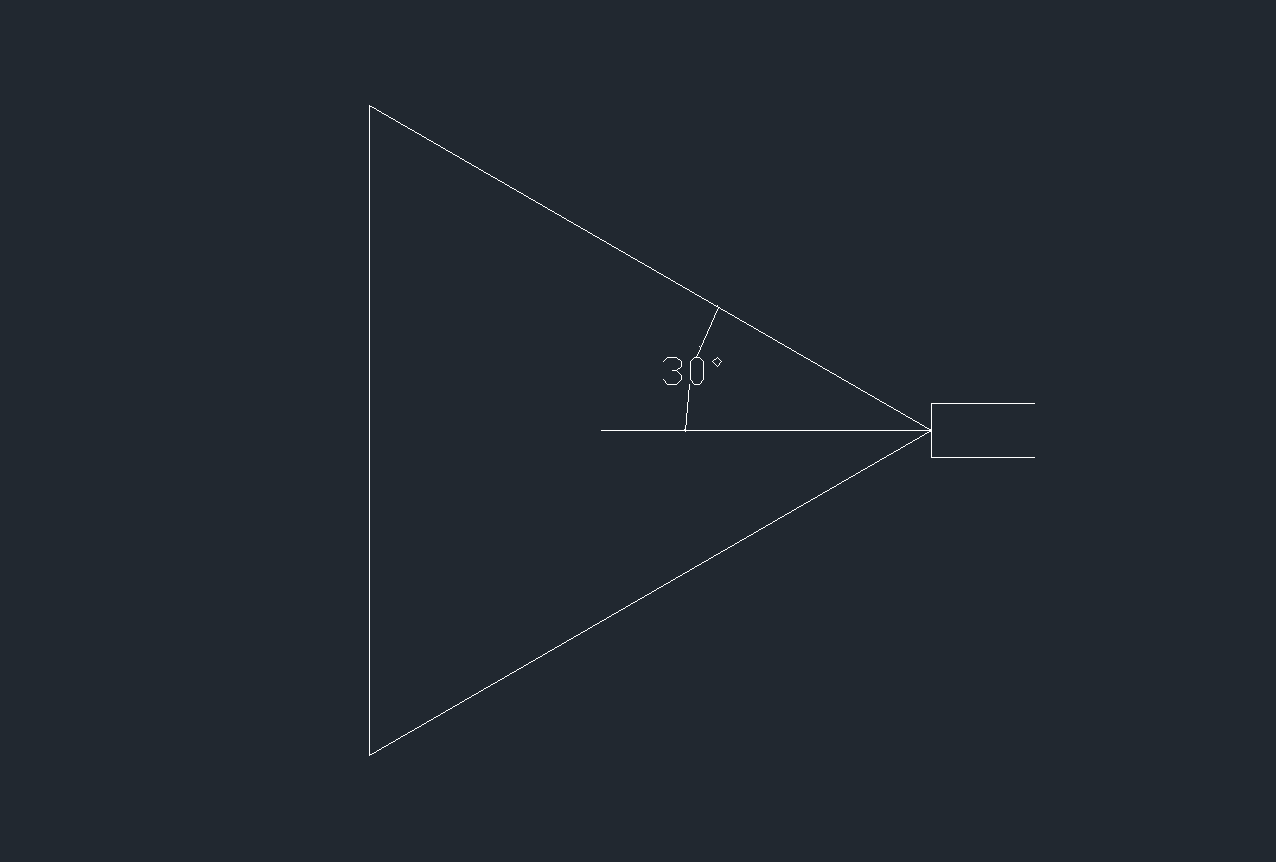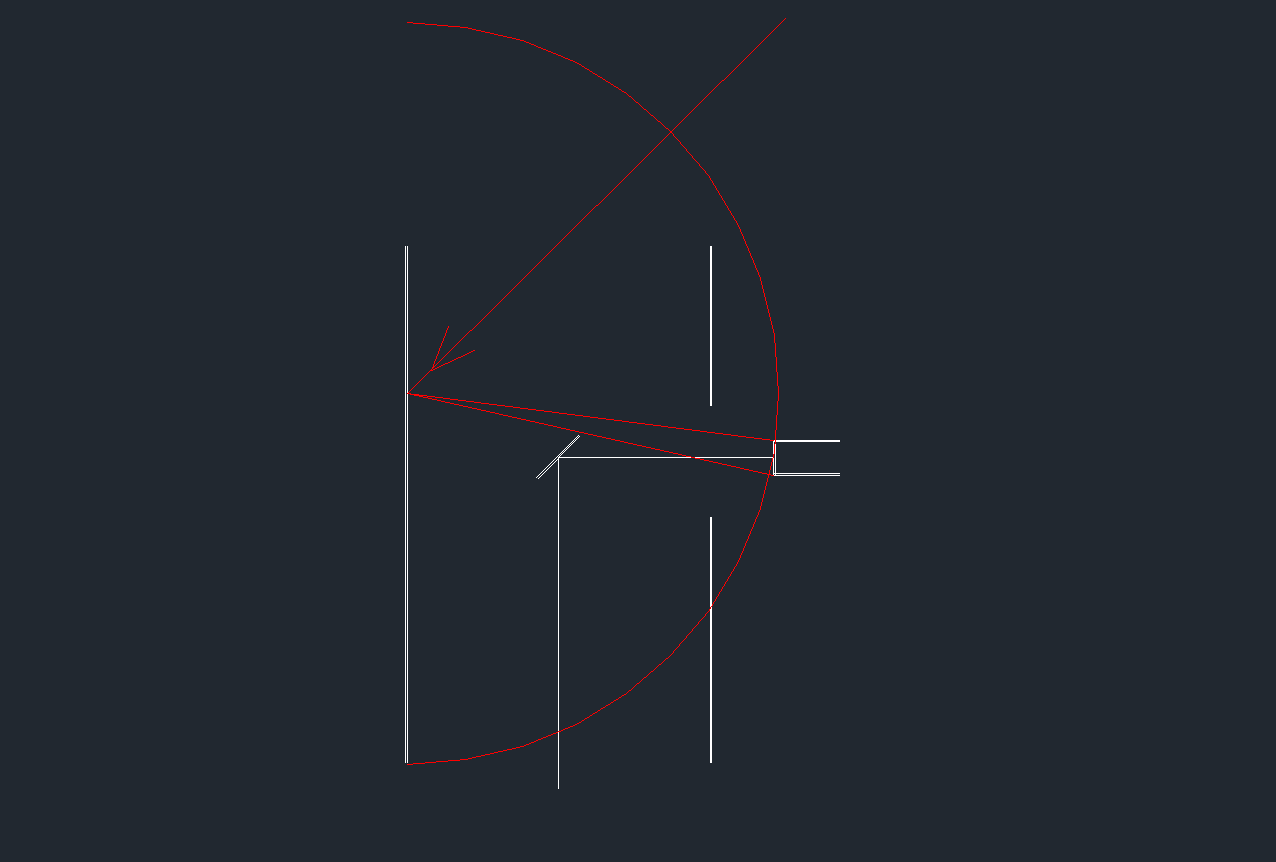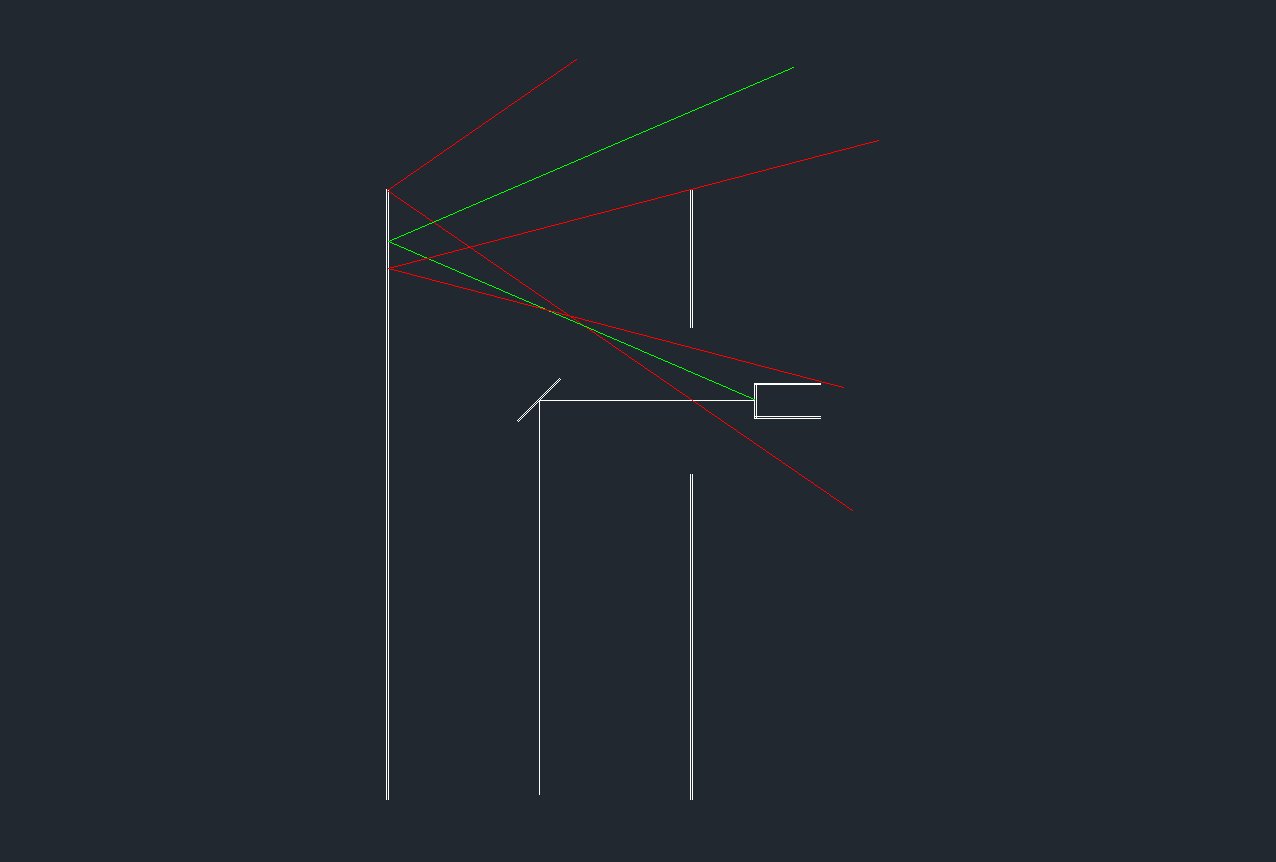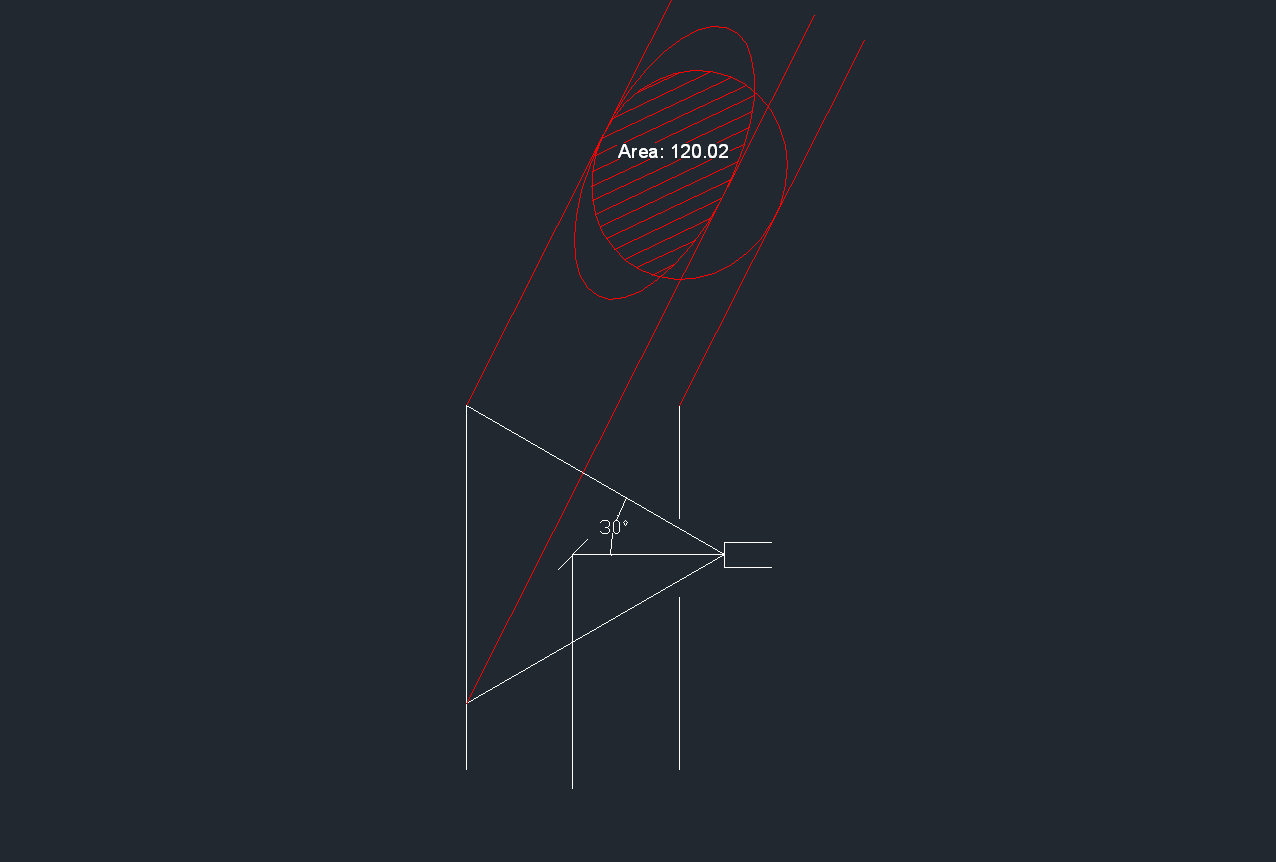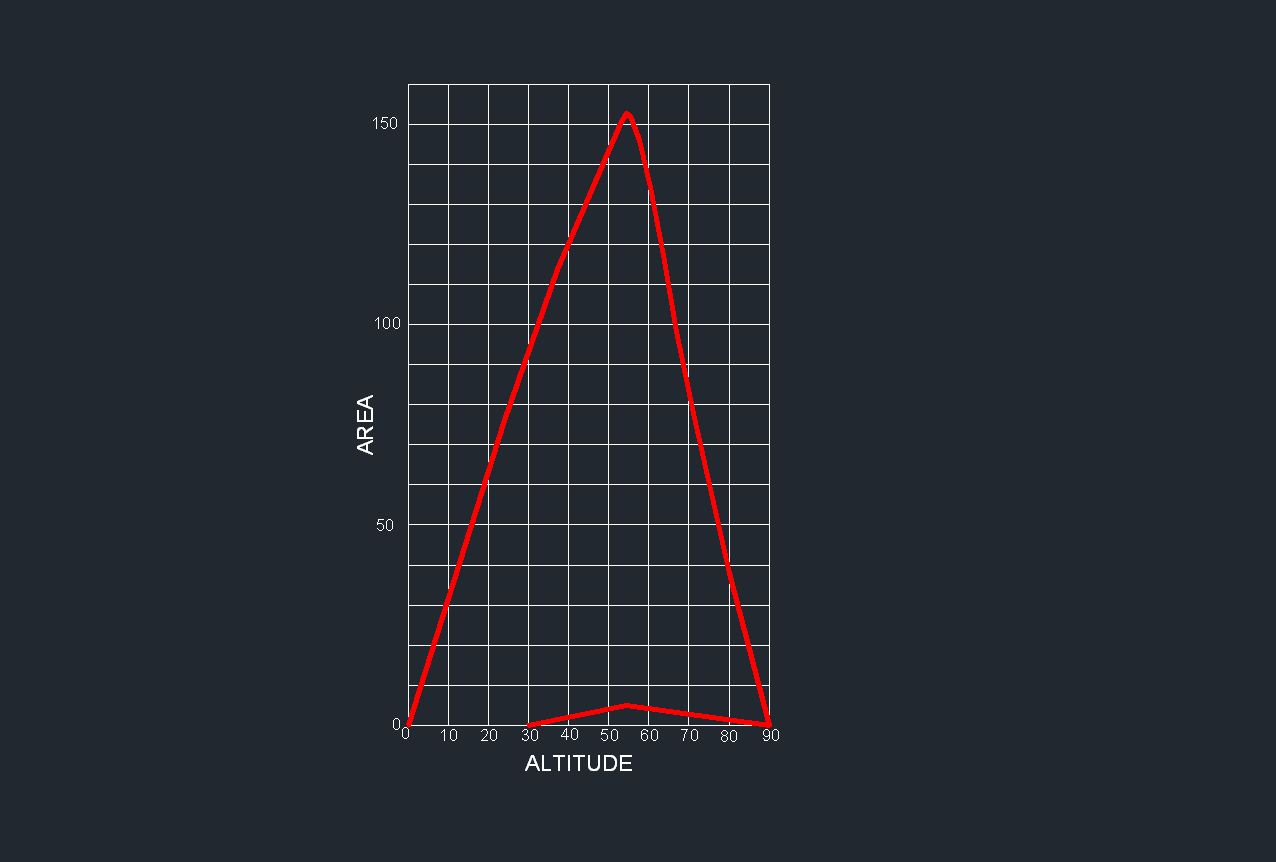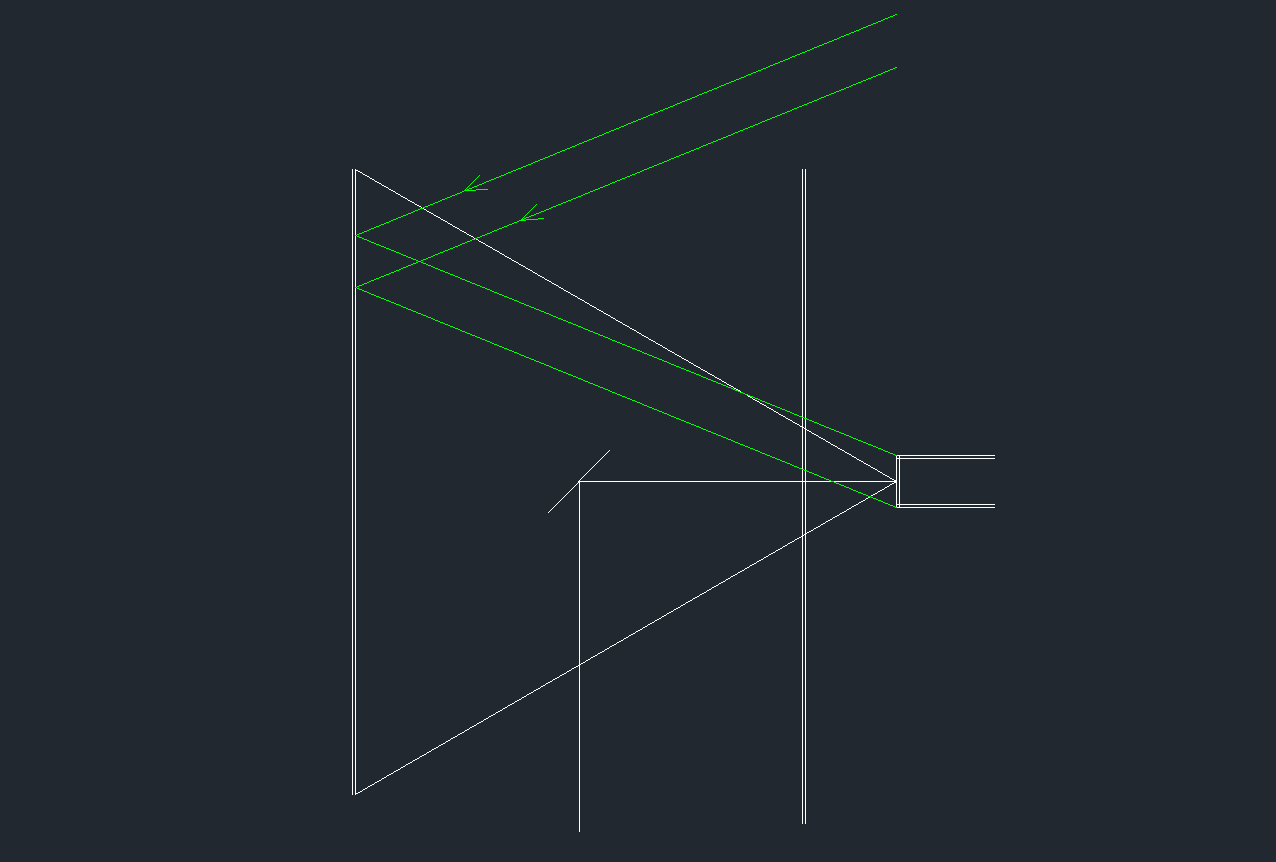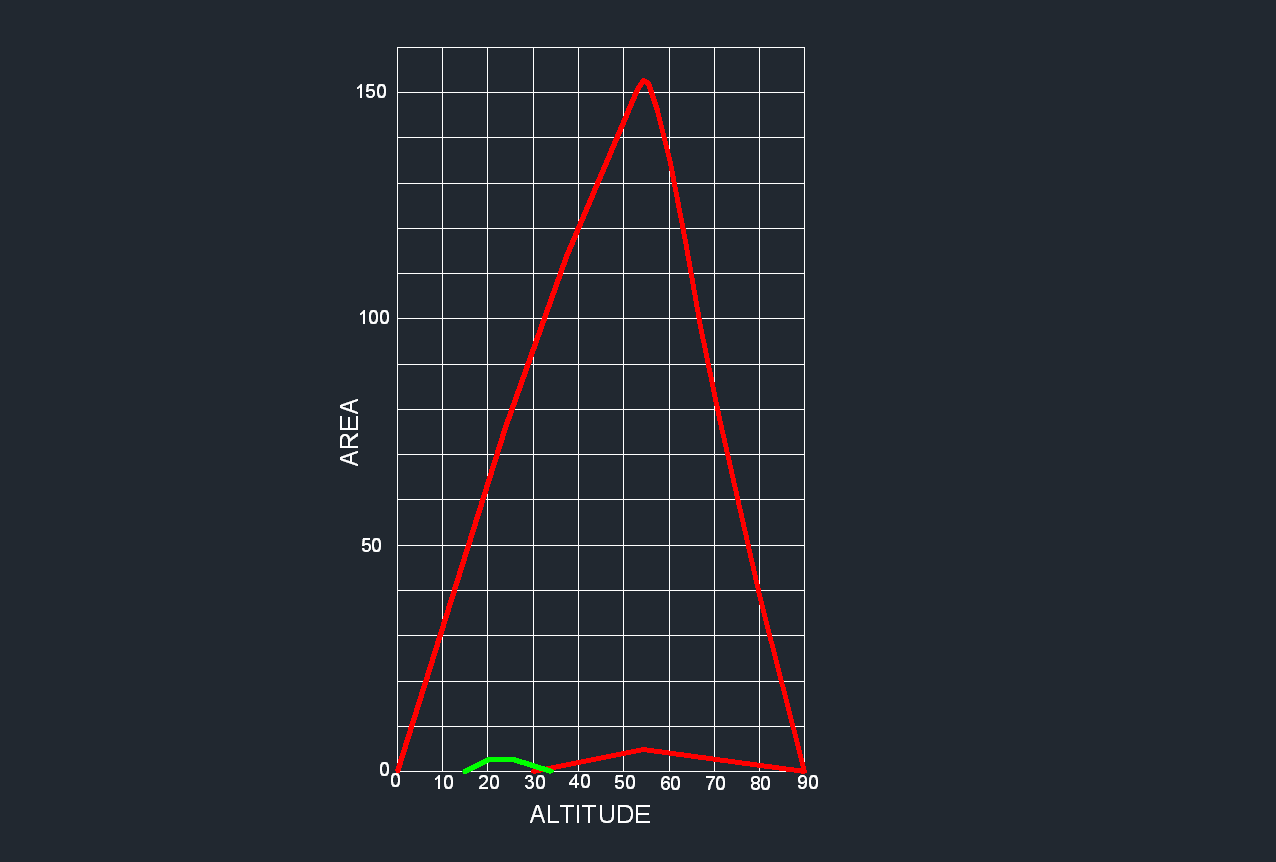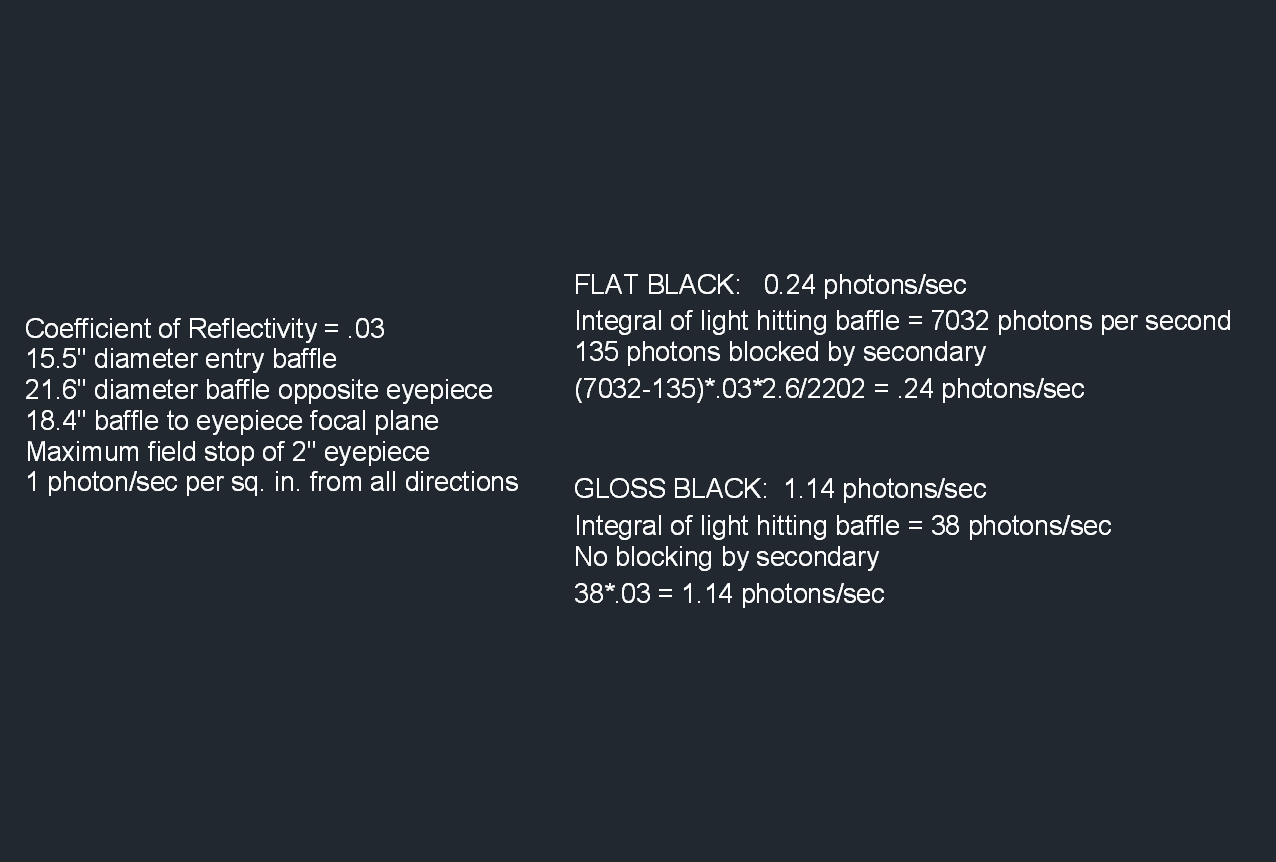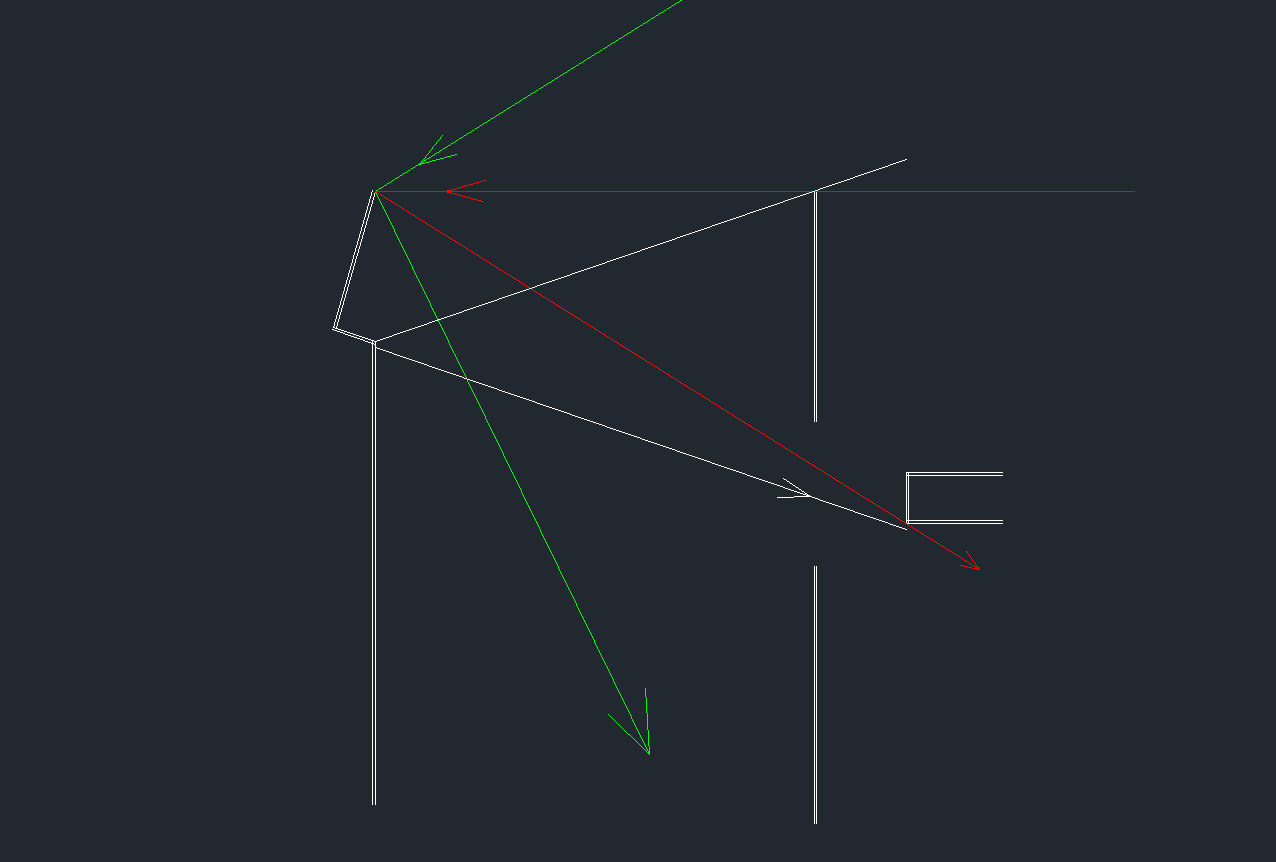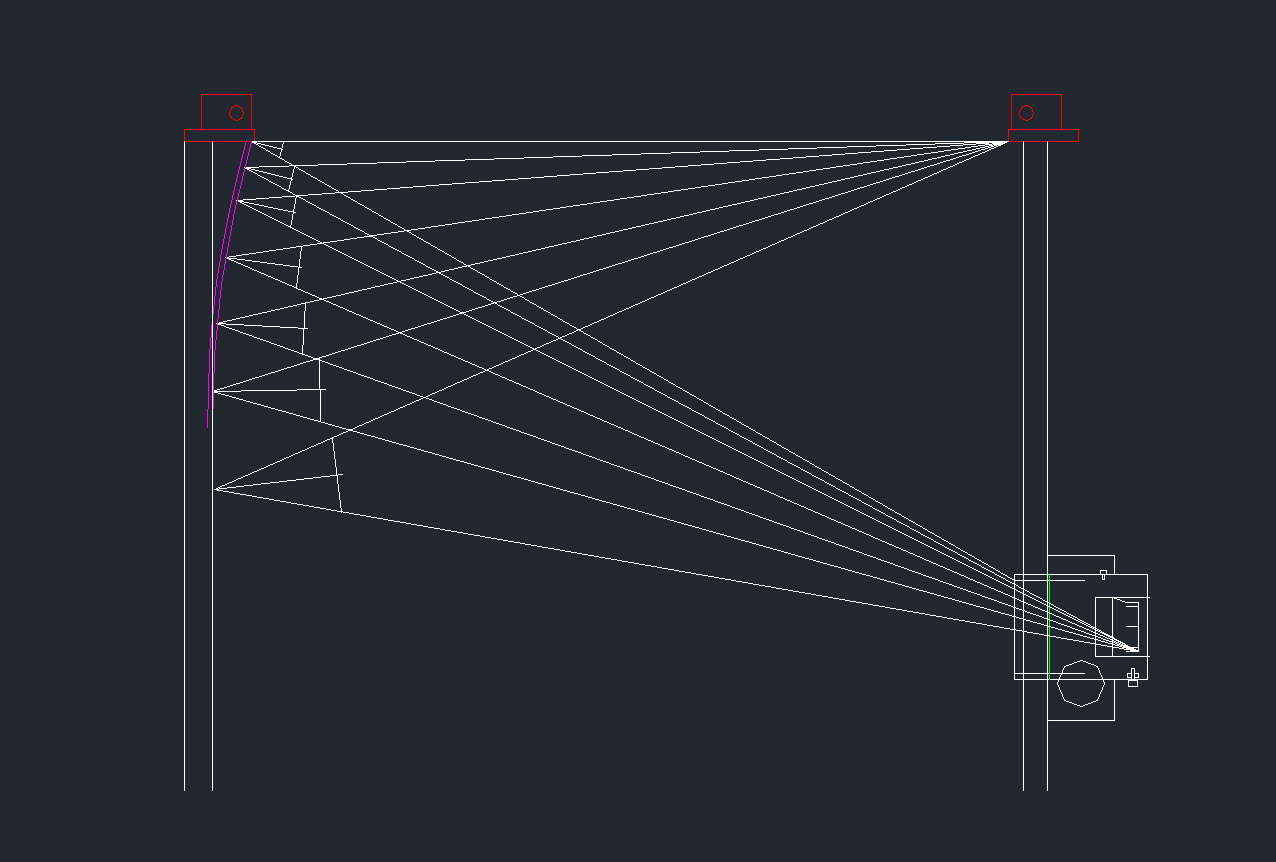The use of Glossy, rather than Flat Black paint for the inside of telescopes, to keep unfocused light from reaching the eyepiece.
Copyright © 2013 Larry Shaper, released under the Creative Commons Attribution-ShareAlike License
08 Oct 2013
Abstract
Table of Contents
- 1. Note by Joe
- 2. Larry's Talk
This is a talk given by Larry Shaper at Stellafane, Springfield VT in Aug 2013. Stellafane does not put the printed version of talks nor the videos of the talks on it's website. I liked Larry's talk and offered to host it on my site AustinTek, untill a more suitable site is found for Stellafane talks.
Joseph Mack, Oct 2013
I have tested several eyepieces and found that light coming from ≥30° off-axis can not be seen. For many eyepieces, the cutoff, beyond which no light will enter the eyepiece, is <30°. So, a baffle opposite the eyepiece, subtending ≤30°, as shown here,
will stop stray light from entering the eyepiece directly.
With such a baffle, stray light must be reflected from the baffle in order to get into the eyepiece. Flat black and gloss black have the same coefficient of reflection, about 3%. The difference is that flat black, if well done, spreads the 3% of reflected light evenly over a hemisphere, and gloss black, if well done, is a mirror; the angle of reflection equals the angle of incidence.
Here is a schematic diagram of a Newtonian telescope, pointed at the zenith, with the baffle painted flat black.
There is a circular opening at the top of the telescope. The baffle subtends 30 degrees. A ray of stray light enters from above-right, strikes the baffle, and is reflected evenly in a hemisphere, shown here with a radius of the baffle to eyepiece field stop distance. The amount of light entering the eyepiece from this ray is:
L = I Refl πr2/(2 π R2) = I Refl (r/R)2/2
- where I is the incoming intensity,
- Reflectivity coefficient = 0.03
- r = radius of the eyepiece field stop,
- R = radius of the hemisphere of reflected light.
Here is the same telescope with the baffle painted gloss black. (rays are colored red or green for labelling purposes.)
3% of the green ray is reflected into the eyepiece: the amount of light entering the eyepiece is:
L = I Refl π r2
where
- I is the incoming intensity,
- Reflectivity Coefficient = 0.03
- and r is the radius of the eyepiece field stop.
Note from Joe: this equation is dimensionally incorrect. The term r2 gives an l2 dimension that shouldn't be there. This doesn't mean that Larry's explanation is wrong, just this equation which describes what he's saying is wrong.
Note that the reflections of the rays labelled red miss the eyepiece, landing either above or below the field stop. So, even though the full 3% of the incoming beam labelled green enters the eyepiece, only rays from a restricted direction can reach the eyepiece.
Here is the calculation for flat black.
Light from a particular direction must pass through the circular opening at the top of the telescope and hit the baffle for reflected light to reach the eyepiece. The less eccentric ellipse is the area of the opening presented to the sky, and the more eccentric ellipse is the area of the baffle presented to the sky. The hatched area is proportional to the number of photons/sec hitting the baffle from this altitude.
Here is the graph of the area of the baffle exposed to the sky as a function of altitude (elevation).
If we assume that light from the sky is constant for all altitudes(elevations), then the total number of photons/sec hitting the baffle is represented by the area under the curve. The smaller curve near the x-axis represents the light that hits the baffle, but is blocked from reaching the eyepiece by the secondary, and this area should be subtracted to give the total number of photons/sec.
Here is the calculation for gloss black.
For the altitude of incoming light shown, the projection of the area of the baffle that can reflect light into the eyepiece is the same as the area of the eyepiece.
Here is the graph of the area of the baffle exposed to the sky, as a function of altitude (elevation) for both gloss black and for flat black.
Although there is obviously much more area for the flat black case, that area must be reduced by the ratio of field stop area to the area of the hemisphere.
Here is the calculation for a particular telescope for the flat black and the gloss black cases.
The result is that the total amount of stray light reaching the eyepiece is 4 to 5 times greater for the gloss black case. Because the light for the gloss black case comes from a small angle, if a portion of the gloss black baffle is tilted, as shown in here
100% of stray light can be blocked.
In this design, a more compact curved gloss black baffle achieves the same result.
Actually, the designs, as shown, do not block 100% of the light. It is possible for light to reflect off the baffle on the same side of the telescope as the eyepiece and then reflect again off the opposite baffle and then hit the eyepiece. The intensity of this ray would be diminished by a factor of more than 1000 (3% of 3%). However, a small portion of the baffle on the eyepiece side of the telescope can also be tilted to achieve a true 100% block of stray light.
